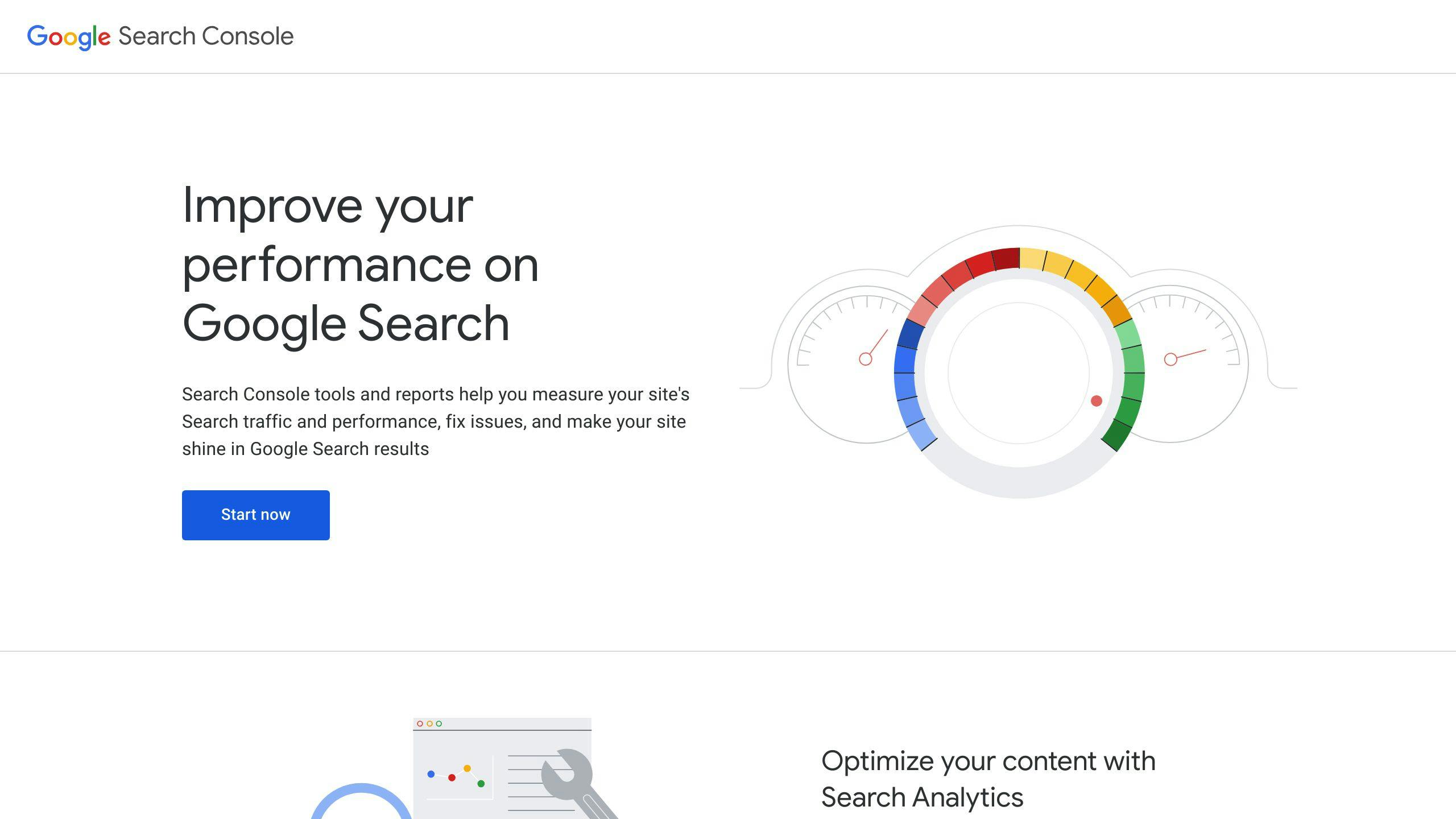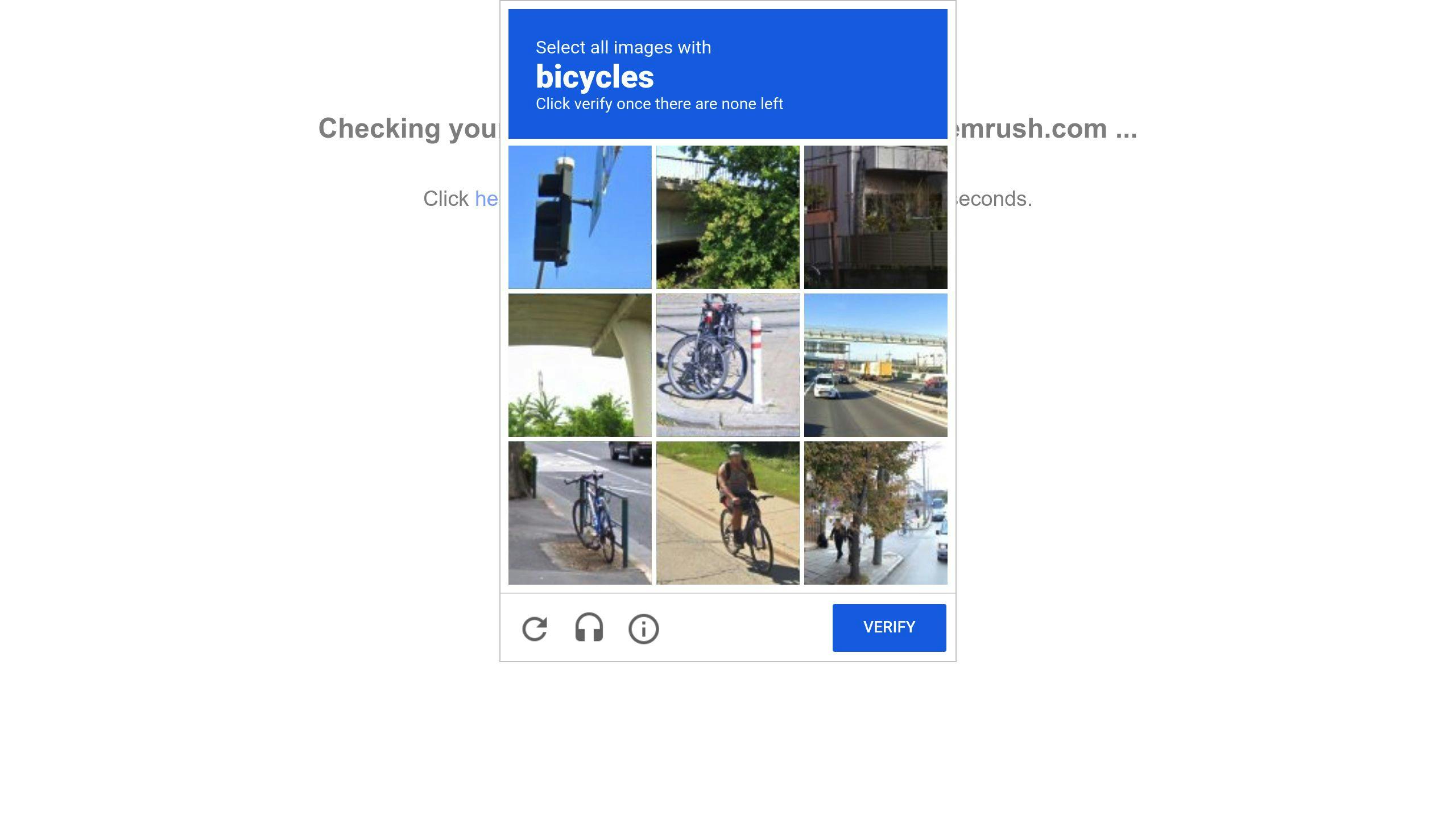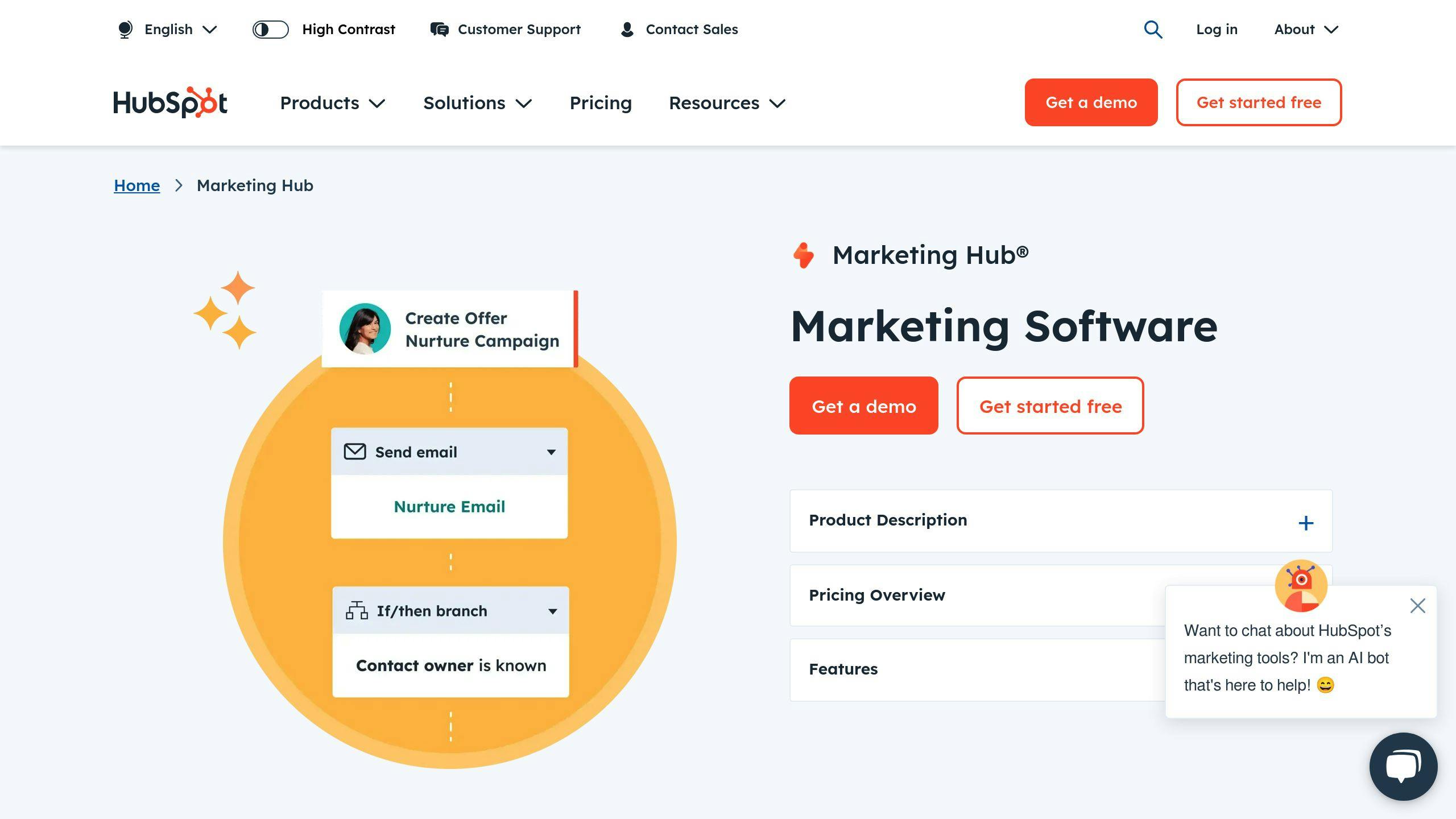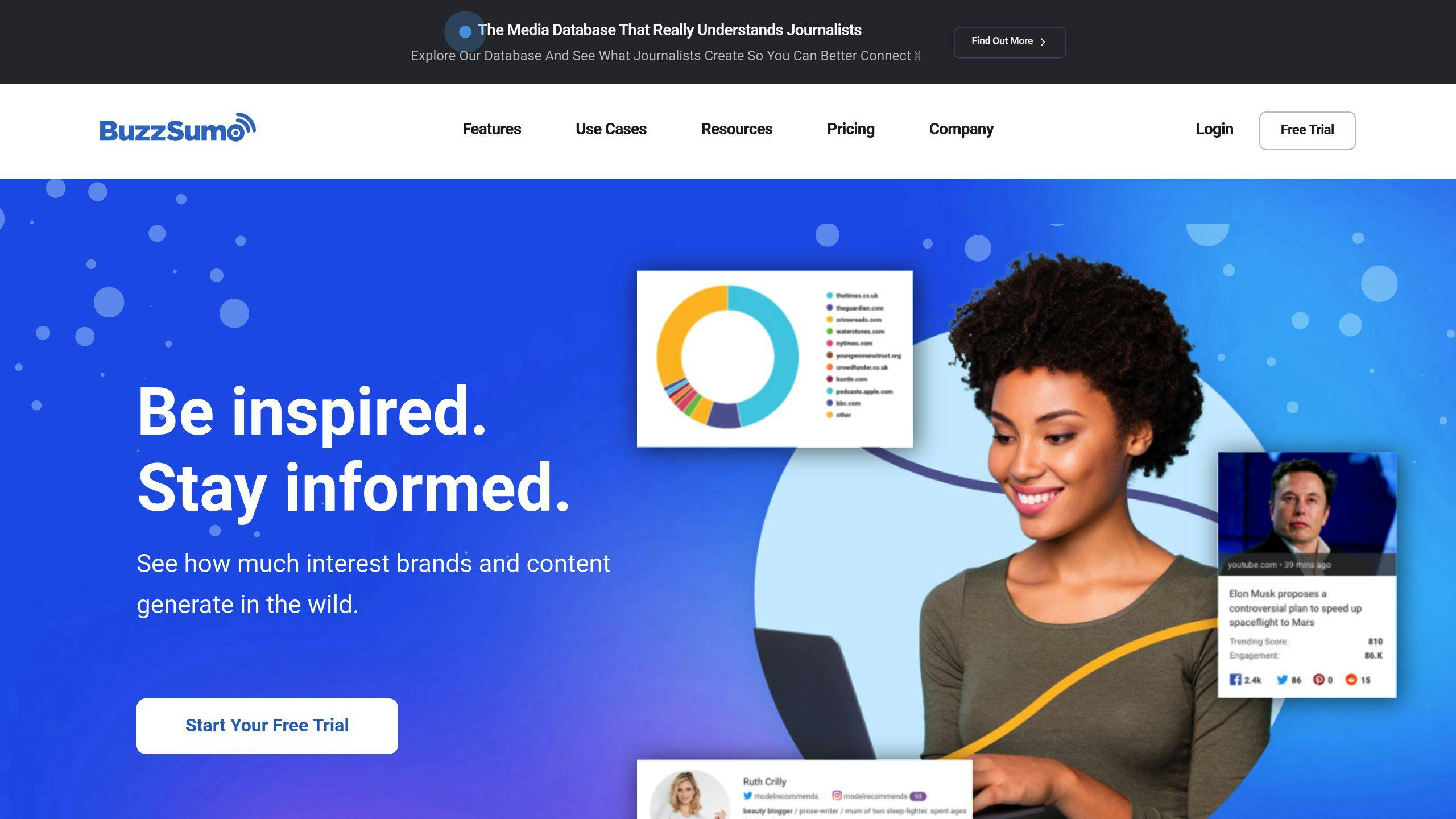# 7 Free Website Tools That Drive Organic Traffic Growth
Want to grow your website's organic traffic without spending money? Here are seven free tools to help you improve SEO, analyze content, and understand your audience.

- Google Search Console: Analyze search performance, fix technical SEO issues, and track keywords.
- Google Analytics: Understand user behavior, traffic sources, and set conversion goals.
- SEMrush (Free Plan): Perform basic keyword research, site audits, and competitor analysis.
- Ahrefs (Free Tools): Check backlinks, generate keyword ideas, and spot technical SEO issues.
- HubSpot’s Marketing Hub: Manage content, analyze performance, and improve SEO.
- Google My Business: Enhance local search visibility with a complete business profile.
- BuzzSumo: Discover trending topics and create engaging content.
These tools work best when combined into a consistent SEO strategy. Start with technical checks using Google Search Console, optimize content with BuzzSumo and HubSpot, and track progress with Analytics and Ahrefs. Together, they provide everything you need to increase traffic for free.
7 Best Free SEO Tools and How to Use Them
::: @iframe https://www.youtube-nocookie.com/embed/p-k2RWRSN2k :::
1. Google Search Console: Boost Your Website’s Performance

Google Search Console gives you direct access to how Google views your site, offering key insights to improve search rankings and grow organic traffic.
The Search Results dashboard provides data on impressions, clicks, and CTR (click-through rate). This helps you spot pages that are underperforming or excelling. For instance, pages with high impressions but low CTR are a great opportunity to tweak meta titles and descriptions to attract more clicks.
The Queries Report highlights the keywords driving traffic to your site. With this data, you can:
- Track rankings for specific keywords
- Identify new keyword opportunities
- Improve content that’s not performing as expected
- Compare how your site performs on mobile versus desktop
Google Search Console also identifies technical SEO issues that might be holding you back, such as slow site speed or poor user experience. The Mobile Usability Report ensures your site is mobile-friendly, which is essential for success under Google’s mobile-first indexing.
For a more complete picture, connect Google Search Console with Google Analytics. This integration lets you see how users find and interact with your site, helping you make smarter decisions about content and technical updates. Together, these tools provide the insights you need to grow your organic traffic effectively.
Once you’ve mastered these insights, you’ll be ready to dive into more detailed audience analysis using Google Analytics, which we’ll cover next.
2. Google Analytics: Understand Your Audience

Google Analytics is a free tool that gives you detailed insights into how your website performs and how visitors interact with it. While Google Search Console focuses on search data, Analytics dives deeper into user behavior.
The Audience Overview dashboard highlights key metrics that help shape your growth strategy:
- Page views and unique visitors: Understand how many people visit your site and how often.
- Average session duration: See how long users stay on your site.
- Bounce rates by page: Identify pages where users leave quickly.
- User demographics and interests: Learn more about your audience’s age, location, and preferences.
The Behavior Flow feature maps out how users navigate your site, showing where they drop off. This helps you pinpoint areas to improve the user experience. Meanwhile, Real-Time Analytics lets you monitor live user activity, so you can see the immediate effects of updates or campaigns.
Want to know which pages are performing best? The Site Content report reveals which pages get the most engagement and lead to conversions. For instance, if mobile users aren’t staying on your site, optimizing mobile content based on Analytics data can make a big difference.
The Acquisition section breaks down traffic sources, showing you where your visitors come from - whether it’s search engines, social media, or direct visits. This helps you focus your efforts on the channels that bring in the most valuable traffic.
When combined with Google Search Console, Analytics gives a full picture of user behavior and search performance. Dig into metrics like bounce rates and session durations to refine your content and improve engagement.
You can also set up conversion goals to track important actions, such as newsletter signups or product purchases. This helps you measure how effectively your site drives business results.
Finally, Analytics integrates seamlessly with SEO tools, acting as a central hub for analyzing performance. Once you understand your audience’s behavior, you can move on to advanced tools like SEMrush to fine-tune your optimization efforts.
3. SEMrush: Tools to Improve Your SEO Strategy

SEMrush’s free plan provides some handy SEO tools, including keyword research, site audits, and competitor analysis, all aimed at helping you grow your organic traffic. One standout feature is the Keyword Magic Tool, which helps you find long-tail keywords with moderate search volume and less competition - making it easier to rank higher in search results.
The Site Audit tool pinpoints SEO problems that could be affecting your rankings. SEMrush’s 2023 report found that 60% of websites deal with technical SEO issues like slow page speeds, mobile usability problems, or broken links.
With the Content Analyzer, you can assess your pages and get actionable tips to improve their SEO. It looks at things like readability, keyword usage, and how your content is structured. The Competitor Analysis feature, on the other hand, lets you compare your site with competitors to uncover gaps and opportunities for traffic growth.
| Feature | Free Plan Limit | What You Get |
|---|---|---|
| Keyword Research | 10 searches/day | Discover ranking keywords |
| Site Audit | Basic technical checks | Fix SEO issues |
| Domain Analysis | Limited reports | Study competitor strategies |
| Content Analysis | Basic recommendations | Improve existing content |
SEMrush also syncs with Google Analytics and Search Console, giving you a unified view of your website’s performance. This integration helps tie your SEO efforts to real traffic and results.
After using SEMrush to fine-tune your keyword strategy and resolve technical SEO problems, you can turn to Ahrefs for deeper backlink analysis and advanced keyword tracking.
4. Ahrefs: Track Backlinks and Keywords

Ahrefs offers tools to analyze backlinks and identify keyword opportunities, making it a go-to platform for improving your SEO efforts. The Backlink Checker shows the top 20 backlinks for any page, helping you assess site authority and uncover link-building opportunities. Meanwhile, the Keyword Generator highlights search terms along with their search volume and competition levels, so you can target keywords that bring in traffic.
| Feature | Free Tool Capability | Purpose |
|---|---|---|
| Backlink Checker | Top 20 backlinks analysis | Spot quality link sources |
| Keyword Generator | Volume + competition data | Pinpoint keywords worth targeting |
| SEO Toolbar | On-page SEO reports | Quick technical SEO analysis |
| Content Explorer | Basic content insights | Find topics that perform well |
The SEO Toolbar is great for spotting technical issues like broken links or redirects, giving you instant insights while browsing. If you’re working on content, the Content Explorer provides data on traffic and engagement, helping you focus on topics that connect with your audience.
Ahrefs also allows you to track keyword rankings, making it easier to measure your SEO progress and adjust your strategy as needed. By combining backlink insights with keyword difficulty and search volume metrics, it gives you a well-rounded toolset for optimizing your site.
Tips for getting the most out of Ahrefs:
- Monitor your backlinks regularly to track new links and identify any that you’ve lost.
- Search for keywords with low competition but good search volume to find ranking opportunities.
- Use the SEO Toolbar to quickly identify and fix technical issues on your site.
Ahrefs is a powerful tool for tracking backlinks and keywords, but there’s more to SEO than just analysis. Next, let’s look at how HubSpot’s Marketing Hub can simplify content and SEO management.
5. HubSpot’s Marketing Hub: Manage Content and SEO

HubSpot’s Marketing Hub provides free tools that simplify content management and SEO tasks. With its built-in SEO toolkit, you can pinpoint technical issues and find areas to improve your site’s performance.
The platform’s content management system includes features designed to help you grow organic traffic:
| Feature | Function | SEO Benefit |
|---|---|---|
| Content Strategy Tool | Plan topics based on keywords | Targets high-value search terms |
| On-page SEO Audit | Checks for technical issues | Boosts search engine visibility |
| Performance Analytics | Tracks traffic and engagement | Supports data-driven optimizations |
| Mobile Optimization | Reviews content for devices | Reaches a broader audience |
One key tool is the content strategy tool, which helps you craft SEO-focused content using keyword research and competitor insights. By refining your content and improving SEO, HubSpot enables websites to climb search rankings and gain consistent organic traffic.
HubSpot’s analytics feature allows you to monitor content performance across devices, channels, and locations. This data is invaluable for fine-tuning your strategy. According to HubSpot’s 2023 findings, websites that regularly blog using their platform have 434% more indexed pages, significantly increasing organic visibility.
The free version of HubSpot’s tools includes several helpful features to enhance your site’s SEO:
- Technical SEO recommendations to improve rankings
- Basic keyword research tools
- Suggestions for content optimization
- Integration with Google Search Console
With HubSpot’s SEO tools, you can refine your current content and strategically plan new pieces to maximize results.
Although HubSpot is highly effective for managing content and SEO, improving local visibility may require additional tools like Google My Business.
6. Google My Business: Boost Local Visibility

Google My Business (GMB) is a free tool that helps businesses improve their visibility in local search results and attract more organic traffic. It connects directly with Google Search and Maps, making it a key part of any local SEO strategy.
GMB plays a major role in local search rankings, contributing to 25% of the factors that determine visibility [3]. When combined with keyword optimization and backlink strategies, it can significantly enhance your overall SEO efforts.
Here’s how specific GMB features can drive organic traffic:
| Feature | Traffic Benefit | Implementation Tips |
|---|---|---|
| Business Verification | Builds consumer trust | Complete the official verification process |
| Visual Content | Boosts engagement | Add high-quality photos and videos |
| Customer Reviews | Improves credibility | Respond to reviews within 24 hours |
| Business Posts | Keeps your listing active | Share updates and offers weekly |
| Performance Insights | Tracks user interactions | Use data to refine your approach |
To get the most out of GMB:
- Fill out your profile completely: Include accurate business details like hours, contact info, and services.
- Use visuals effectively: Upload clear, high-quality photos and videos to showcase your business.
- Engage with customers: Respond to reviews and questions quickly to build trust.
- Stay active: Post regular updates about events, promotions, or news.
The platform also provides analytics that reveal how users interact with your listing. These insights include:
- How often your business appears in searches
- Actions customers take (website clicks, calls, or direction requests)
- Overall performance metrics
By analyzing this data, you can fine-tune your local SEO strategy and attract more qualified traffic. Regular updates and activity on GMB are essential to maintaining visibility in local search results.
Lastly, don’t forget to keep your information updated - especially business hours and contact details - to avoid confusing potential customers. While GMB helps boost your local presence, tools like BuzzSumo can complement your efforts by identifying content trends that engage your audience.
7. BuzzSumo: Find Popular Content Ideas

BuzzSumo is a go-to tool for spotting trending topics and crafting content that pulls in more organic traffic. According to its data, the top 1% of content is responsible for 77% of all social shares [4]. That stat alone highlights how important it is to focus on data-driven content creation.
Here’s how BuzzSumo can help boost your traffic:
| Feature | How It Helps | How to Use It |
|---|---|---|
| Content Discovery | Finds topics that perform well | Research trending topics weekly |
| Performance Metrics | Tracks engagement and shares | Analyze what works and why |
| Competitor Analysis | Reveals others’ winning content | Keep tabs on top competitors |
| Content Alerts | Tracks trends in real time | Set up daily keyword alerts |
How to Make the Most of BuzzSumo
Analyze and Plan
Dive into the top-performing content in your niche over the past six months. Look for patterns: What formats work best? Are there specific lengths or posting times that drive engagement? Aim to create content that performs consistently over time, rather than chasing quick viral hits.
Create with Purpose
Use the insights to craft content that matches current trends but still delivers value to your audience. BuzzSumo’s research shows that formats like listicles and how-to guides are reliable for driving traffic [1]. Incorporate these into your content plan for steady growth.
BuzzSumo works well alongside tools like Ahrefs, helping you align content trends with backlink opportunities. When you integrate it into your overall SEO strategy, it becomes a powerful way to create content that not only attracts attention but also supports your long-term traffic goals.
Conclusion
Boosting organic traffic doesn’t have to break the bank, especially with the right free tools at your disposal. These seven tools together create a powerful system for improving website performance and driving traffic. When used thoughtfully, they can help you make noticeable progress in your site’s visibility and overall success.
The secret? Consistency and making decisions based on solid data. Tools like Google Search Console and Google Analytics serve as the backbone, helping you understand both technical issues and user behavior.
Here’s a quick look at how these tools can work in harmony to deliver results:
| Traffic Focus | Main Tool | Supporting Tool | Key Advantage |
|---|---|---|---|
| Technical SEO | Google Search Console | SEMrush | Resolve crawl issues |
| Content Optimization | BuzzSumo | HubSpot Marketing Hub | Improve trending content |
| Understanding Audience | Google Analytics | Ahrefs | Align with user intent |
| Local SEO | Google My Business | Google Analytics | Increase local visibility |
To get the most out of these tools, integrate them into a well-rounded strategy. Don’t let the data overwhelm you - focus on actionable insights. Whether it’s tracking backlinks with Ahrefs, analyzing content trends with BuzzSumo, or refining your local reach with Google My Business, these tools provide top-tier insights without the cost.
For consistent progress, establish a routine. For example:
- Conduct weekly technical checks using Google Search Console.
- Review content performance monthly with BuzzSumo.
- Plan quarterly SEO audits with SEMrush.
This structured approach ensures steady improvement while giving you room to adapt to changing SEO trends. Start small - weekly audits with Google Search Console - and gradually incorporate deeper analyses with tools like SEMrush and BuzzSumo. With these tools in your toolkit, you’re ready to tackle SEO challenges head-on, setting the stage for long-term growth. Stay tuned for practical tips in the FAQ section below.
FAQs
Is it possible to do SEO for free?
Absolutely, you can implement SEO strategies without spending a dime by using free tools and staying consistent in your efforts. The right mix of resources can go a long way.
For example, the Ahrefs SEO Toolbar is a free Chrome extension that provides handy features like on-page reports and link analysis.
Here’s a list of free tools to kickstart your SEO efforts:
| Tool | Purpose |
|---|---|
| Google Search Console | Identify errors and ensure mobile optimization |
| Ahrefs SEO Toolbar | Conduct quick audits and analyze links |
| Google Analytics | Understand audience behavior and track performance |
“Regular monitoring and adjustments using free SEO tools can help achieve measurable traffic growth results” [2]
To get the most out of these tools:
- Keep an eye on Core Web Vitals, optimize for mobile-first indexing, and track keyword performance.
- Regularly review performance metrics to spot trends and areas for improvement.
- Use the insights gained to fine-tune your content and technical SEO strategies.
While paid tools can offer more advanced features, these free options are more than enough to cover the basics. By consistently using them, you can lay the groundwork for sustainable organic traffic growth - all without spending a single dollar.